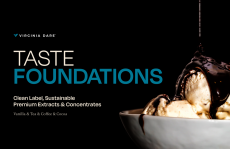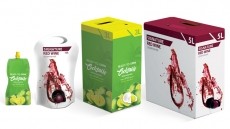Sweet taste study promises perfect sugar replacement
help control diseases like diabetes and obesity could be just round
the corner, according to a new study.
Scientists at The University of Manchester and The University of Maryland School of Medicine in Baltimore claim to have made a major advance in understanding what makes a substance taste sweet.
The discovery could help pave the way for the development of low-calorie sweeteners that mimic natural sugar and leave no bitter aftertaste.
"Our study has for the first time measured how sugar and some synthetic sweeteners interact with two types of taste receptors on the tongue," said Dr Graeme Conn in Manchester's Faculty of Life Sciences.
"Some synthetic sweeteners only interact with one receptor. We found that sugar interacts with both. Similarly, sucralose, the sweetener used in Splenda, also interacted with both receptors but with a greater intensity to sugar.
"Knowing what molecular mechanisms are at play has given us a greater understanding of what makes sugar taste sweet and will no doubt help us design better sweeteners."
The competitive sweetener industry is enjoying considerable growth above the industry average as consumers with growing health and weight concerns turn away from sugar-heavy foods and beverages to 'lite' versions. According to market analysts Freedonia, the sweetener market is set to grow at around 8.3 per cent year on year until 2008: considerably higher than growth in the ingredients industry currently at about 3 to 4 per cent.
Soft drinks are driving demand, pushing supplies for competitive sweeteners aspartame and Splenda, as well as Acesulfame K. However, consumers are sometimes put off by sugar substitutes that can leave a slight bitter aftertaste, and don't quite manage to capture all the properties of sugar.
The research findings, published in the 8 November issue of the scientific journal Current Biology, could therefore have implications for diabetic patients, who need to regulate their sugar intake, as well as for tackling the growing problem of obesity. A recent study by food firm GoLower showed that the average adult in Britain consumed 33 teaspoons of sugar a day, more than three times the recommended amount.
Much of this sugar intake was consumed through everyday food items, like baked beans, bread and cereal, as well as in tea, coffee and alcoholic drinks.
"A major goal of the food-science industry has been to create a sweetener that tastes like sugar but isn't high in calories," said Dr Steven Munger, of the University of Maryland School of Medicine.
"To do this, it would be invaluable to know how the natural substance interacts with taste receptors so that synthetic products can be created to mimic that interaction. We hope that food scientists can use our research to create sugar alternatives with the most natural taste, offering more choice to consumers who rely on low-calorie products to help control diseases like diabetes and obesity."
The research follows a recent study by scientists at Ohio State University, which suggested that the tongue's ability to differentiate between sweet and bitter tastes may actually reside in the same taste bud. The scientists think that two peptides - small proteins that enable cells to talk to one another - have different effects in the same cells. Previous research into taste has revealed that the human tongue has about 10,000 taste buds with five taste sensations: sweet, bitter, and umami, which work with a signal through a G-protein coupled receptor; salty and sour which work with ion channels.
Contrary to popular understanding, taste is not experienced on different parts of the tongue. Though there are small differences in sensation, which can be measured with highly specific instruments, all taste buds, essentially clusters of 50 to 100 cells, can respond to all types of taste.
Taste buds (or lingual papillae) are small structures on the upper surface of the tongue that provide information about the taste of food being eaten.













